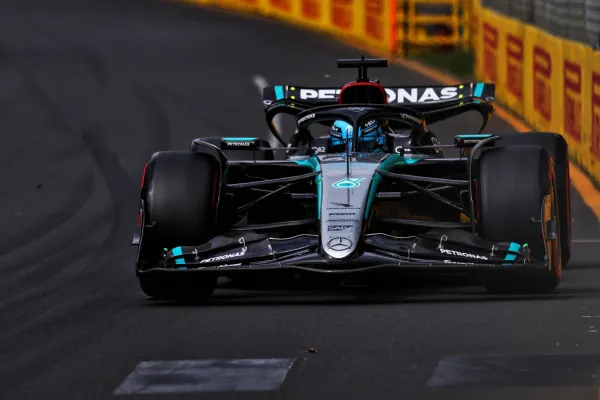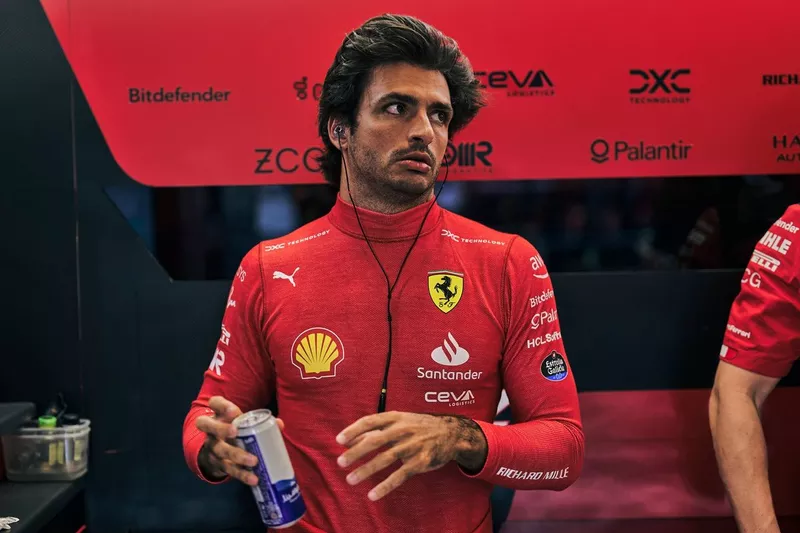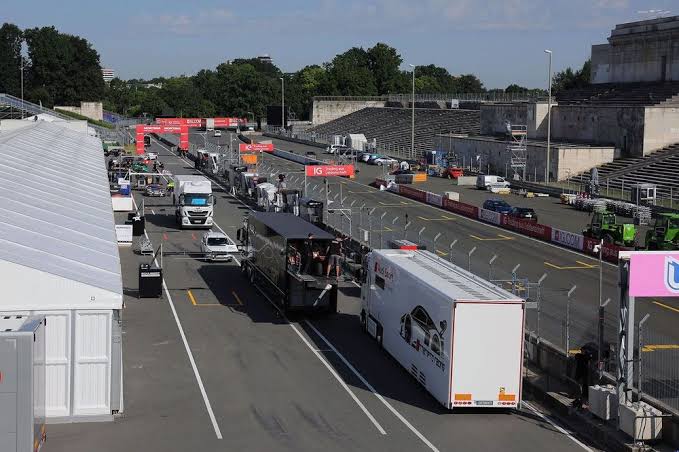KTM’s Financial Restructuring And Commitment To MotoGP: Navigating Challenges And Opportunities
In the world of motorsports, particularly in MotoGP, Austrian motorcycle manufacturer KTM has been a significant player, known for its high-performance bikes and competitive racing teams. However, KTM has recently faced substantial financial challenges, leading to a comprehensive restructuring plan. This article delves into KTM’s financial restructuring efforts, its commitment to MotoGP, and the implications of these developments for the company and the sport as a whole.
Financial Challenges and Restructuring
KTM’s financial woes have been well-documented, with the company grappling with a staggering debt of approximately €1.8 billion. This financial burden has necessitated a restructuring plan aimed at ensuring the company’s survival and stability. The restructuring involves a significant write-off of debts, with creditors agreeing to accept only 30% of their claims in cash. This plan requires KTM to deposit €548 million with the restructuring administrator by May 23, 2025.
The restructuring process is critical for KTM’s survival, as it aims to avoid bankruptcy and maintain operational continuity. The company has secured a crucial €50 million from Bajaj to facilitate the gradual resumption of production starting mid-March 2025. This financial injection is essential for ramping up production and ensuring cash flow, which is vital for KTM’s recovery.
Commitment to MotoGP
Despite the financial challenges, KTM’s commitment to MotoGP has been a subject of both speculation and reassurance. Initially, there were plans to exit MotoGP by 2026 as part of cost-saving measures, given the significant financial strain the sport places on the company. However, recent developments suggest a more optimistic outlook. Dorna Sports CEO Carmelo Ezpeleta has revealed that negotiations are underway for a new contract that would see KTM continue in MotoGP beyond 2026, potentially until 2031.
This potential extension highlights KTM’s enduring commitment to the sport and its belief in the strategic value of participating in MotoGP. The company’s motorsport director, Pit Beirer, has emphasized that preparations for the 2025 season are proceeding as planned, with no noticeable impact on the team’s competitiveness. Moreover, KTM is already planning for the future, including the development of its 2027 engine, which will align with MotoGP’s transition to an 850cc formula.
Strategic Implications
KTM’s decision to potentially continue in MotoGP reflects a broader strategic approach aimed at balancing financial recovery with brand visibility and technological innovation. Participating in MotoGP not only enhances KTM’s brand image but also provides a platform for technological development and testing, which can be beneficial for its consumer products.
However, the financial constraints necessitate careful cost management. KTM has already announced plans to exit MotoGP by 2026 as part of its initial restructuring strategy, aiming to save approximately €46 million annually by withdrawing from MotoGP, Moto2, and Moto3. This move underscores the company’s efforts to prioritize financial stability while maintaining a presence in motorsports.
Future Prospects and Challenges
As KTM navigates its financial restructuring and considers its future in MotoGP, several challenges and opportunities emerge:
- Financial Stability: Securing the necessary funding to meet creditor obligations is paramount. The search for investors, potentially including major brands like BMW, is ongoing. Ensuring financial stability will be crucial for KTM’s long-term viability.
- MotoGP Participation: The potential extension of KTM’s involvement in MotoGP could provide a significant boost to the brand’s global visibility and technological prowess. However, this must be balanced against the financial costs associated with competing at the highest level.
- Technological Innovation: MotoGP offers a unique platform for KTM to develop and test cutting-edge motorcycle technology. This innovation can trickle down to consumer products, enhancing their performance and appeal.
- Marketing and Branding: KTM’s participation in MotoGP provides an opportunity for innovative marketing and branding strategies. By leveraging its racing success and technological advancements, KTM can strengthen its brand identity and attract new customers.
To explore more about how top motorsports teams maintain their edge, see our article on the latest strategies in racing technology and team management. Discover how MotoGP superstars and storylines stay ahead of the game through innovative marketing and branding
The Role of Partnerships
KTM’s financial restructuring and its commitment to MotoGP are also influenced by strategic partnerships. The company’s relationship with Bajaj Auto, which owns a significant stake in KTM, has been instrumental in providing financial support during this challenging period. Additionally, partnerships with other brands could offer additional resources and expertise, potentially enhancing KTM’s competitive position in both the consumer market and MotoGP.
Impact on the Motorsports Industry
KTM’s situation has broader implications for the motorsports industry. The financial challenges faced by KTM highlight the economic pressures that many motorsports teams and manufacturers face. The cost of competing in top-tier motorsports like MotoGP is substantial, and teams must balance these costs with the need for technological innovation and brand visibility.
The potential for KTM to continue in MotoGP despite financial challenges underscores the strategic importance of the sport for manufacturers. MotoGP offers a global platform for showcasing technological prowess and enhancing brand reputation, which can be crucial for attracting customers and investors.
Looking Ahead: Opportunities and Challenges
As KTM navigates its financial restructuring and potential continued participation in MotoGP, several key factors will influence its success:
- Financial Recovery: The ability to manage debt and secure stable funding will be crucial for KTM’s long-term viability.
- Technological Advancements: Continuing to innovate and improve motorcycle technology will be essential for maintaining competitiveness in both MotoGP and the consumer market.
- Marketing Strategies: Effective marketing and branding will help KTM leverage its racing success to attract new customers and strengthen its brand image.
- Partnerships and Collaborations: Strategic partnerships could provide additional resources and expertise, enhancing KTM’s position in the industry.
To delve deeper into how motorsports teams leverage partnerships for success, explore our article on strategic collaborations in racing. Discover how MotoGP teams optimize their marketing strategies to stay competitive and build brand loyalty.
The Broader Impact on Motorsports
KTM’s situation highlights broader trends in the motorsports industry. The financial pressures faced by KTM are not unique; many teams and manufacturers struggle to balance the costs of competing with the need for technological innovation and brand visibility.
The potential for KTM to continue in MotoGP underscores the strategic importance of the sport for manufacturers. MotoGP offers a global platform for showcasing technological prowess and enhancing brand reputation, which can be crucial for attracting customers and investors.
Additional Insights: The Future of Motorsports
As KTM and other manufacturers navigate the challenges of financial restructuring and strategic planning, the future of motorsports is likely to be shaped by several key trends:
- Sustainability and Electric Vehicles: The shift towards more sustainable and environmentally friendly technologies, such as electric motorcycles, may play a significant role in the future of motorsports.
- Technological Innovation: Advances in technology, including AI and data analytics, will continue to enhance performance and safety in motorsports.
- Global Reach and Marketing: Effective marketing strategies will be crucial for teams and manufacturers to build global brand recognition and attract new fans.
- Partnerships and Collaborations: Strategic partnerships will remain essential for securing funding, expertise, and resources in the competitive world of motorsports.
Conclusion
KTM’s journey through financial restructuring and its commitment to MotoGP is a complex narrative of challenges and opportunities. As the company works to stabilize its finances and secure its future in motorsports, it must balance cost-cutting measures with strategic investments in brand visibility and technological innovation. The potential for KTM to continue in MotoGP beyond 2026 offers a promising outlook for both the company and the sport, highlighting the enduring appeal of high-performance motorcycles and the competitive spirit of MotoGP.
In the world of motorsports, where financial stability and technological innovation are paramount, KTM’s story serves as a compelling example of resilience and strategic planning. As the company moves forward, its commitment to MotoGP will be closely watched, not just for its impact on KTM but also for its implications for the broader motorsports industry.
Final Thoughts: Resilience in Motorsports
KTM’s story serves as a powerful reminder of the resilience and adaptability required in the motorsports industry. As the company navigates financial restructuring and considers its future in MotoGP, its commitment to innovation and performance will remain a guiding principle.
In the dynamic and competitive world of motorsports, where financial stability, technological innovation, and brand visibility are intertwined, KTM’s journey offers valuable lessons for teams and manufacturers facing similar challenges. Whether through strategic partnerships, technological advancements, or innovative marketing strategies, the ability to adapt and evolve will be crucial for success in the years to come.
Delve deeper into MotoGP and follow for constant, unfiltered updates on the sport at speedope.





















